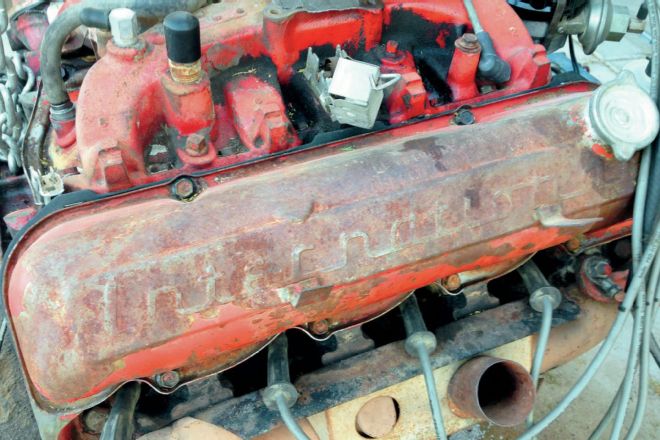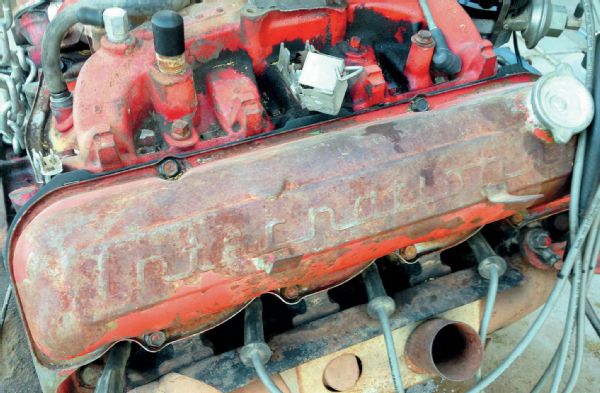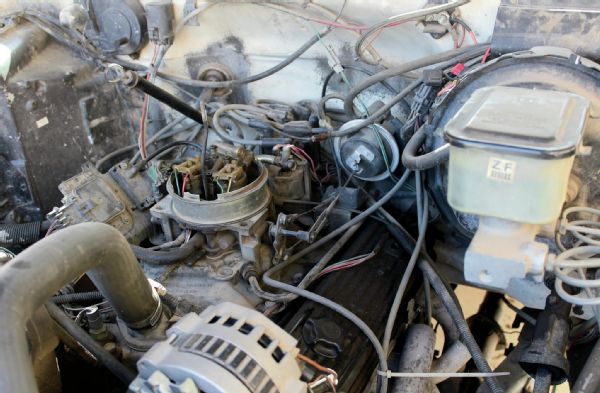
Better Brakes
Q I have a ’66 K10 Suburban with the original closed-knuckle Dana 44. Years ago I converted it to front discs using ’72 Blazer parts. I have not driven the truck in years, and part of putting it back on the road will be going through the brakes. I know from my involvement in hot rodding that the easiest way to improve braking is bigger brakes. Typically a kit will consist of larger rotors, high-performance pads, and a new caliper bracket that spaces the caliper out farther. Going from 9.4-inch rotors to 10.1 on my Volkswagen Rabbit made a huge difference, but I can’t find any such kit for the Dana 44. Does anyone know of one? The discs work better than the drums, but even they are not up to the task. The rest of the system is up to non-ABS modern standards; booster, dual master cylinder, Chevy combination valve, all new brake lines, and so on.
I would prefer to find a well-engineered kit from a manufacturer, but I’d be open to other methods. On the VWs the caliper mounts directly to the steering knuckle. One manufacturer sells a small bolt-on extension bracket that moves the caliper out far enough to go from stock 9.4-inch-diameter to later 11-inch-diameter Corrado rotors. I would be open to that form of solution if I could find an appropriate larger rotor and if I could be sure that the stock caliper mount would be strong enough to stand up to the new higher leverage.
It doesn’t seem that I could find a newer donor even if the Dana 44/10-bolt parts were compatible. It appears that all 1⁄2-ton rotors were 11.86 inches in diameter right up to the end of solid axles.
George
Via nuts@4wheeloffroad.com
A Unfortunately there are not a whole lot of brake upgrade options for the front axle on your Suburban. This is complicated by the fact that prior to 1973, a surprising number of variations to the disc brake systems were used on GM trucks. You are correct in saying that once the parts were standardized, not many changes took place until GM went IFS in 1988 (1992 on Suburbans). Though you successfully upgraded your Suburban’s closed knuckle to discs using ’72 Blazer parts, keep in mind that this might cause unexpected problems with any upgrades that you try and make, as what few upgrades are available have been designed around the later standardized brake systems. Things like spindles, seals, axleshaft diameters, caliper mounting stands, and even the calipers themselves may be different between the ’72 parts you swapped and the later Chevy brake systems.
While I wasn’t able to find any larger-diameter rotor upgrades like you suggest (mostly because this would require wheels with a larger diameter than 15 inches, which were not all that common up until the last 10 years or so), you do have some options. Stainless Steel Brakes (800.448.7722, ssbrakes.com) offers a slotted rotor kit that is a direct replacement for the stock rotors on ’73 and later trucks. These rotors offer better braking performance with the added benefit of being able to dissipate heat more efficiently. The company also offers a set of high-performance brake pads, as does EBC Brakes (702-826-2400, ebcbrakes.com). At one time Stainless Steel Brakes also offered a cast iron caliper with a slightly larger-diameter piston, but this option isn’t currently listed on the company’s website. Keep in mind that all bets are off in terms of whether or not these upgrades with work with your pre-standardized disc brake parts.
The good news is that the disc brakes used on GM trucks are actually quite good and have proven to be up to the task of stopping larger tires and wheels time and again. I assume that when you upgraded the disc brakes originally, you also swapped in all of the related parts to match (master cylinder, brake booster, proportioning valve, and so on). If that’s the case, I would focus on making sure that everything is in good working order. If braking performance still isn’t up to your standards, then you might consider converting the rear axle drum brakes to disc. There are many rear disc brake options out there depending on what axle is under your Suburban.
Binder Engines Revisited
Q I’m sure many have beaten me to this, but you probably should know that International V-8 motors do not have timing chains [“Binder in a Bind,” Nuts & Bolts, Aug. ’14]. Instead, they are gear to gear. Otherwise, it’s nice to see IH stuff once in a while. There are many of us out there: The few, the proud, the stubborn.
Walt C.
Via nuts@4wheeloffroad.com

A I stand corrected, Walt. I should have known better, as IH engines are nothing if not overbuilt, and therefore timing would be gear driven rather than chain driven. I’ve punished myself by working on a friend’s International truck recently and have sworn to thresh a field of corn in the near future.
More Pulling Power
Q I have a ’95 Dodge Ram 1500 with a 360ci engine, automatic transmission, and 3.55 gears. I often tow an 18-foot 10,000-pound car trailer hauling my Jeep or other cars on it. I have power problems when towing and was wondering if you can help with the best solution for better pulling power. I have thought about changing gears front and rear to 4.10s in the 1⁄2-ton axles, or maybe I should just install a set of 3⁄4-ton axles with 4.10s? Would the 3⁄4-ton axles be a bolt-in procedure? Or, if I change the gears in the 1⁄2-ton gears, would I need carriers as well? The truck runs 285/70-R16 tires, so all I would need to do is change to eight-lug wheels. I know it would probably be better to just sell the 1⁄2-ton and buy a 3⁄4-ton, but I inherited this truck when my dad passed and it means a lot to me. Any help with the best solution to my problem would be greatly appreciated.
Doran
Via nuts@4wheeloffroad.com
A I’d be willing to bet that more than one reader is contemplating the same questions, and it is indeed a tough call. As you probably know, you are towing with a load that is right at the limit of your 1⁄2-ton Ram, if not exceeding it. You are correct that the simplest thing to do would be to sell the truck and upgrade to a 3⁄4-ton or 1-ton, but since that’s not an option for you, the choice becomes whether or not you stick with the stock axles and regear them, or find some heavier-duty donor axles,
Your truck is equipped with a Dana 44 front axle and either a Chrysler 81⁄4 or 91⁄4 rear axle. The 81⁄4 axle is fairly light-duty even for a 1⁄2-ton truck and really isn’t worth upgrading, especially for the kind of loads you are regularly towing. Not only is the gearset fairly small, but it has C-clip rear axles that are prone to break. The 91⁄4 rear axle is better, but it, too, is plagued with C-clip axles and you’re still fairly close to the limit of what it can handle in terms of carrying loads. If you choose to upgrade the stock axles, the rear carrier will be the same for 4.10s but the front Dana 44 carrier will need to be changed.
Since you plan on keeping the truck for a long time, I would lean towards going with heavier-duty axles. The good news here is that the suspension is virtually identical between the Ram 1500 and the 2500s/3500s of the same era, making the axle swap close to a bolt-in affair. Since you are going through all of the work anyway, I would seek out a 2500 with a diesel or any nondualie 3500. This will net you a Dana 60 front axle and a Dana 60, Dana 70, or Dana 80 rear axle depending on how the donor truck was optioned out. Stick to the same generation as your truck (’94-’02) to avoid any surprises or complications, and be aware that some 3⁄4-ton trucks came with a Dana 44, which is the same as what’s in your truck, albeit eight-lug.
With the donor axles in hand, some minor differences will need to be addressed, the worst of which will likely be moving the spring pads on the rear axle. Also keep in mind that driveline modifications will be necessary, but all in all, this is one of the easiest 1⁄2-ton to 1-ton conversions of all time. Springs, shocks, and even steering should bolt right up. You might even get lucky and score donor axles with 4.10s already in them, making the swap almost a no brainer. If you combine 4.10s with some mild engine upgrades (an intake, headers, and an exhaust system) you should be able to keep up with traffic most of the time, but long grades will likely still be a challenge. Even so, you’ll have axles that are much more up to the task of towing heavy loads reliably. Keep in mind that once the axles are upgraded, the weak link becomes the transmission.
Smog-Legal TBI
Q I have a ’79 Chevy K5 Blazer 4x4. Does any company make a GM TBI fuel injection system that will pass smog? I am going use a 350ci V-8, a 4L80 tranny, and an NP205 transfer case.
JT
Via nuts@4wheeloffroad.com

A It’s hard to beat the simplicity of GM’s Throttle Body Injection systems. They are rock-solid reliable and easy to retrofit on just about any engine. As you probably already know, Howell Engine Development (howellefi.com) is pretty much the leader in GM TBI retrofit kits, and the company does offer 50-state legal kits for select applications, including Jeeps. Interestingly, though, Howell does not offer a 50-state legal system for older Chevy trucks. CARB EO numbers that certify an aftermarket product is 50-state legal are application-specific, meaning that Howell must go through the expensive and complicated process of obtaining certification for each vehicle model and year. I can only assume that Howell hasn’t had enough demand for emissions-legal systems for older Chevy trucks like your Blazer.
You didn’t mention which state you live in, but I assume you live in California or one of the handful of other states that have adopted California’s emissions standards. If this is the case, then in order to legally install a TBI system on your ‘79 Blazer, you will need to go to a smog referee just like you would with an engine swap. That being the case, you might consider swapping in something with more power, like an LT1 or even an LS engine. Though the swap itself will be more complicated, you’ll end up going through the same hassle as you would with a TBI system but end up with an engine that has potentially double the power of your truck’s stock small-block.
Submission Information
Confused? Email your questions to the address below with “Nuts, I’m confused” as the subject. Include a picture, if applicable, no smaller than 1600 x 1200 pixels (or two megapixels) as a TIFF, EPS, or maximum-quality JPEG. We also read the forums on (4wheeloffroad.com). Write to: Nuts & Bolts, 4-Wheel & Off-Road, 831 S. Douglas St., El Segundo, CA 90245 fax to: 818.566.8501 Email to: nuts@4wheeloffroad.com